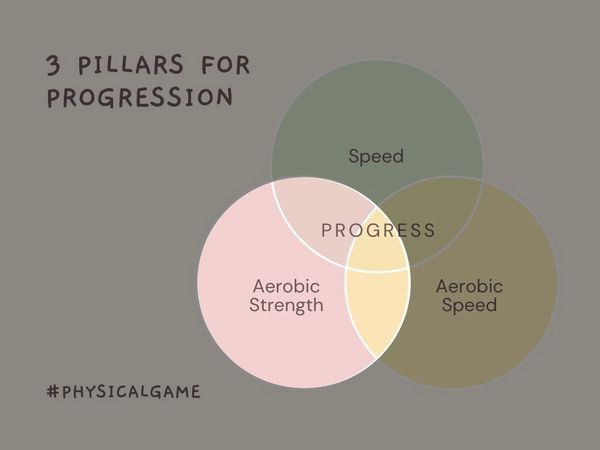You want to be better, right? Well, I am going to give you my top 10 areas for continued progression and development in sport.
Sport specific strength
When your body is redlining on race day and your ability to keep going is being tested, trust me, it is not your last threshold session that is going to help you hang in there, it is your neuromuscular strength, which you create and built consistently in training in the presence of oxygen.
Gravity
Use gravity to your advantage: the slower you climb on the bike, the better your technique has to be. Running slowly uphill similarly has this requirement and is more challenging in some respects. Essentially, the more that gravity is pressing down on you, the greater the benefit is to you, as you are building brilliant technique in the presence of oxygen and your body has the space to integrate it and use it as the bedrock, upon which your performances are based.
Wattage & Climbs
On climbs you can work at higher wattages for lower oxygen costs. I have a few tricks up my sleeve that I used for my pro squad, and I can tell you that there is a way to hold threshold wattage in the presence of oxygen. If you work your climb efforts in the AT1 range, you will build strength without damage to your aerobic system - which can result from too many threshold efforts on the flat.
Swim Strength
If you cannot swim with flat paddles without shoulder trouble, then something is highly likely not quite right with your stroke - your catch is probably too shallow. If you are not an elite pool swimmer, you have to approach this differently: as your thoracic is most likely far tighter than an elite swimmer’s, so need to use your muscles to develop a pull through that is effectively as strong in catch and hold. This requires a slight adjustment to technique.
Most age group swims in races are with a wetsuit. Therefore the best way to mimic that in the pool is by using a pull buoy and paddles or using wetsuit shorts, which will help you develop the swim strength you require.
Those Damn Hills
I would go as far as to say that you could throw everything you know about training out of the window and simply go out into the hills and still race well. Cycling teams base themselves for extended blocks of training on the cols for this very reason. Make the hills your best friend and you will easily develop aerobic strength. If you can run efficiently over rolling hills and climb efficiently on the bike, the flats will take care of themselves. Speed always follows on from strength, not the other way around.

Trails
Here is a little fact: in my experience coaching professional athletes, we would benefit more from putting 40kms per week into their legs on trails than we would do from putting in the same mileage on the road. The balance and strength that develop in tendons from running on trails are another factor, which reflects the benefits of running on trails and mixed surfaces for athletes.
Smooth Load
Training is not about numbers; it is about load. You can get so busy chasing numbers these days that you can ignore the feedback coming back from your body. The human body has its own intelligence and if you pay attention to the load and not just the numbers or the data you are collecting, you will be responding to direct feedback from your body, which is far more accurate.
Numbers supply data to your mind, but your mind is not the physicality that is actually engaged in the process. Pay attention to the load and your levels of fatigue and you will build strength.
Aerobic Function
Aerobic function is a simple measure of strength - if you think you can overcome your legs with your lungs, you are limiting yourself. Consequently, if you build great aerobic strength, the reward lies in the next pillar, great aerobic speed. Develop strength through aerobic movement patterns and this will relay back to you tenfold.
Backend Strength
Your ability to hold yourself together towards the end of a race is bound by foundational strength. Yes, this results from all that slow stuff you do in the hills.
Often athletes will blame a lagging backend speed in a triathlon race on their running volume, when it is in fact a result of a lack of foundational strength development on the bike. The devil is in the detail – so the screen you stare at on your bike computer does not have all the answers if your backend strength is lacking and this is developed in training through strength endurance work on the bike primarily. Simply look at your aerobic foundational strength if you find yourself struggling at the end of the running leg in your races.
Bomb Proofing
You can count on it that well-conditioned athletes who are aerobically strong are far less prone to injury. If you are prone to injury, there is a reason for this that is begging for your attention.
Look at your aerobic strength and its position in your programming, as if you are lacking aerobic strength, you will without a doubt be far more vulnerable to injury.
